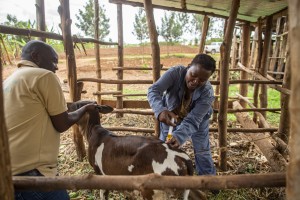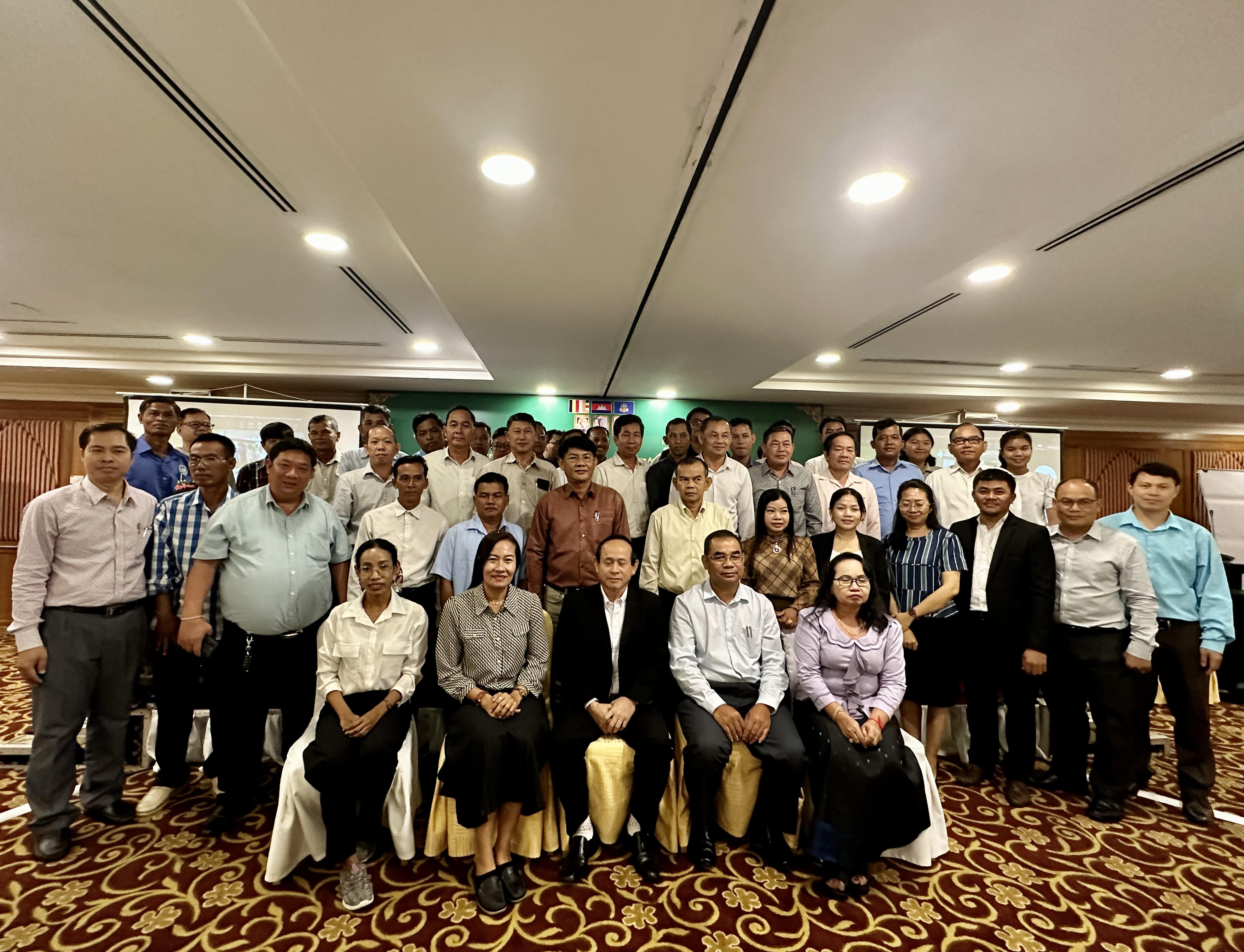An article by VSF International, which reflects on how the COVID-19 crisis should make us rethink the way we relate to the environment, livestock and wildlife, and how the One Health approach can help us to be more resilient to future crises. The article has been published in Spanish by Eldiario.es, and in Italian by La Settimana Veterinaria.
The entire world is facing complex challenges linked to the rapid spread of severe acute respiratory syndrome coronavirus 2 (SARS-CoV-2), which causes coronavirus disease COVID-19. Epidemiologists and virologists are in the first line in understanding where the virus originated, how it adapted to a new host (humans) and how it spreads. Even if to date there is still uncertainty about the exact source, currently available evidence identifies horseshoe bats (Rhinolophus affinis) and pangolins as intermediate host that might have facilitated transfer to humans[1] in Wuhan region, followed by a rapid spread across China, Europe and the rest of the world.
The possibility that new viruses emerge from wild or domestic animals, is well known (e.g. viruses of HIV, H5N1 highly pathogenic avian influenza, H1N1 swine flu, Ebola, Middle East Respiratory Syndrome, etc). The first severe acute respiratory syndrome (SARS) epidemic in 2002 showed us the devastating impact coronaviruses can have in term of economic disruptions to affected countries, mortality rate, and possibility of re-emergence[2].
 Animal, human and environmental health: everything is interconnected
Animal, human and environmental health: everything is interconnected
Diseases that are transmitted between animals and humans, called zoonotic diseases, are becoming more and more frequent as the distance between people and wildlife is shrinking and contacts becoming more frequent, as human populations encroach on natural areas. The increasing demand for raw materials and resources such as wood, minerals, fuel and crop land mainly for producing livestock feed, is leading to a widespread degradation of ecosystems and causing ecological disruption. Intensive or industrial agriculture is often presented as the solution to feed the growing global population, but it is causing an overall loss of biodiversity; soil and water contamination; and high emission of greenhouse gases. Livestock intensification is also increasing the risk of transmission of diseases due to the proximity of large numbers of animals in restricted spaces. Deforestation driven by logging, mining, road building, and rapid urbanization leads to the disruption of habitat that pushes wildlife to move and mix with other animal species and with humans, increasing the risk of zoonotic pathogens’ spread[3].
All these changes are happening at unnatural speed and contribute to shorten the distances and increase contact between people, wildlife and possible disease reservoirs.
One Health key to address complex health crises
The COVID-19 pandemic emphasises once more that human health and animal health are interdependent and bound to the health of the ecosystems in which they exist. This interconnection between the health and well-being of people, animals and the environment is known as One Health. One Health as a concept was developed[4] to respond to the spread of serious infectious diseases and zoonoses through an integrated approach to health. After many failures in properly addressing complex health crises, it became clear that collaboration between different sectors – involving researchers, laboratories, public services and civil society – is fundamental to tackle disease spread from all possible angles and create a solid basis for disease control.
Despite some efforts in making One Health operational, disease surveillance and response systems often remain siloed between the human, veterinary and environmental scientific communities. If collaborations are effectively put in place, we would be better prepared in responding quickly and effectively to new diseases. Veterinarians and ecologists, for instance, have a central role in identifying disease reservoirs both in wild and domestic animals.

In the global South,these collaborations are key to optimise the few resources available and to strengthen public health. The fact that in Africa and South East Asia more than 241 million people fall ill and 312,000 die each year for food-borne diseases[5] (many of them directly linked to consumption of contaminated animal-sourced food or water) shows clearly that there is no health and food security without food safety and hygiene. In solving this simple equation, joint efforts from different sectors are required: human medicine; veterinarians; microbiologists; experts in water, sanitation and hygiene; sociologists; gender specialists, economists, etc.
In order to limit the spread of COVID-19, it is central to understand that each local context is unique from a socio-cultural perspective but also in terms of available infrastructures or housing conditions. Millions of people lack access to running water (44% of African urban populations lack access to piped water[6], and the percentage increases dramatically in rural areas). People without access to water will struggle to enact the basic hygiene recommendations – such as washing hands – that are repeated again and again by medical authorities during this COVID-19 crisis. Social distancing is also difficult to perform where entire communities base their livelihood on the informal economy and live in confined spaces.
Adapted solutions and messages should be developed in order to maximise populations’ capacity to adopt them and effectively limit the propagation of the virus. The role of NGOs, local civil society and community leaders that know local contexts well is fundamental to develop adapted prevention strategies in areas that are poorly served by public services. Again, all this should be done under a One Health collaborative approach.
A paradigm shift
In the current situation, One Health proves to be important not only as a response to a specific health crisis, but as a way to rethink the foundation of our societies and production systems. Examining how human, animal and environmental health systems can work together is clearly an important part of learning from the current crisis in order to build our resilience throughout this pandemic and as we prepare for other threats such as future pandemics and climate change related threats.
The global situation caused by COVID-19 is more than a public health emergency. It is a political, economic and social crisis that will have long-term impacts on the economic well-being of people, on their habits and on the role of politicians in managing complex global emergencies. In finding ways out of this crisis, we urge a deep questioning of our global models of production, consumption and trade; of local and international markets, of agriculture and livestock production.
 Sustainable agricultural practices such as agroecology can help to re-establish ecosystem balance by producing healthy food in an environmentally sound way, protecting biodiversity, promoting fair and sustainable marketing channels, supporting local food systems, and respecting animal welfare, all contributing to the wellbeing of humans, other living beings, and entire ecosystems.
Sustainable agricultural practices such as agroecology can help to re-establish ecosystem balance by producing healthy food in an environmentally sound way, protecting biodiversity, promoting fair and sustainable marketing channels, supporting local food systems, and respecting animal welfare, all contributing to the wellbeing of humans, other living beings, and entire ecosystems.
In the midst of confinement measures, limitation of movements and international transport, local food systems are proving to be much more resilient than industrial agriculture, whose complex value chain is fragmented and dependant on international trade[7]. Local food systems, small-scale farming and agroecological practices should be strongly supported worldwide. Globally, small-scale farmers provide 70% of the food in the markets, forming a pillar of food security, while preserving natural areas and biodiversity through sustainable agricultural and livestock practices integrated in natural processes.
If we want to be better prepared to face new diseases, we need to embrace One Health in all its nuances: by putting in place collaborations between the human, veterinary, and environmental communities, by strengthening public health, but also by changing drastically the way our societies and economies relate to nature, starting with supporting local food systems, small-scale farmers and agroecological production methods.
Download the article:
————————————
[1] Lam, T.T., Shum, M.H., Zhu, H. et al. Identifying SARS-CoV-2 related coronaviruses in Malayan pangolins. Nature (2020). https://doi.org/10.1038/s41586-020-2169-0
[2] Vincent C. C. Cheng, Susanna K. P. Lau, Patrick C. Y. Woo, Kwok Yung Yuen (2007) Severe Acute Respiratory Syndrome Coronavirus as an Agent of Emerging and Reemerging Infection. Clinical Microbiology Reviews Oct 2007, 20 (4) 660-694; https://doi.org/10.1128/CMR.00023-07
[4] https://www.cdc.gov/onehealth/basics/history/index.html
[6] https://www.oecd.org/water/GIZ_2018_Access_Study_Part%20I_Synthesis_Report.pdf





